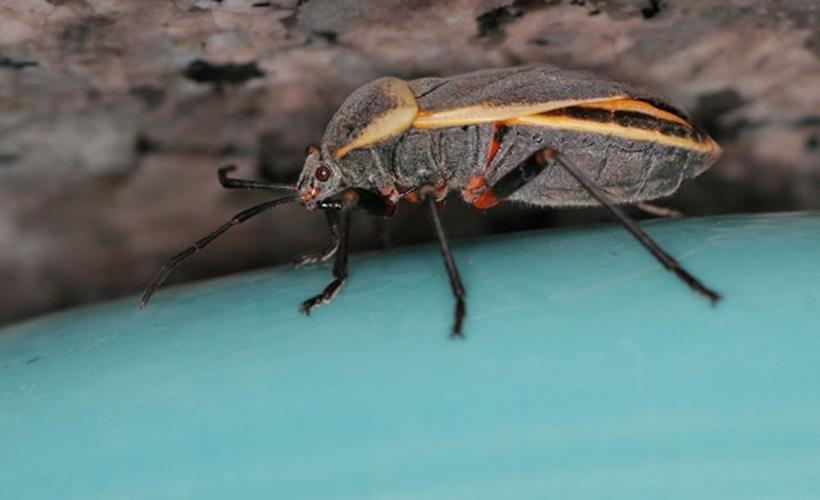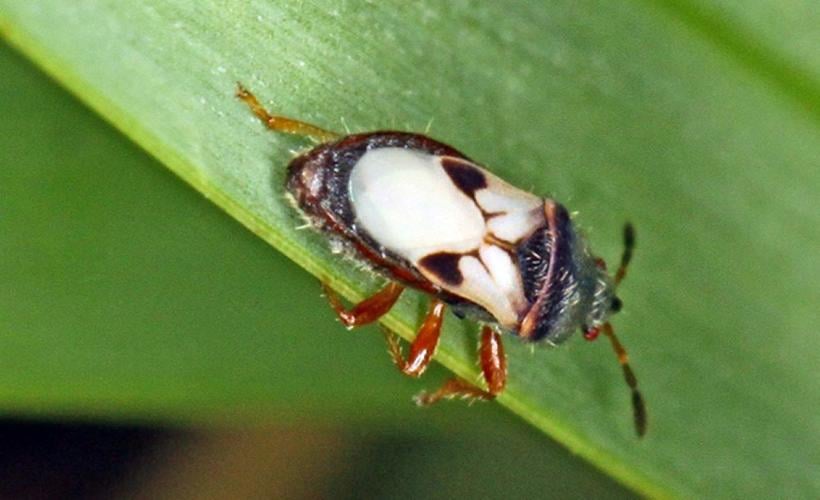As summer temperatures begin to skyrocket, plants in SaddleBrooke begin to house two typical nuisance insects: boxelder bugs and chinch bugs.
Boxelder bugs are a species of "true bugs" (order Hemiptera) common throughout North America. Their name derives from their primary source of food: the seeds of boxelder trees, though they are known to occasionally consume the seeds of maple and ash trees. Female boxelder trees also provide the insects with their primary breeding ground, as they lay their eggs upon its leaves.
Small in size, boxelder bugs measure only half-an-inch long on average with a width of less than one-fourth-inches. Mature boxelder bugs are mostly black but can be identified by the three red lines that run across their thorax and the additional thin red lines on their wings.
These insects lay their eggs during the summer months. When first produced, the eggs of the boxelder bug are yellow in color, but eventually become a solid shade of red. This red matches the appearance of the hatched nymphs, or immature boxelder bugs, which are flightless before metamorphosis. Most humans encounter these insects during the fall months, when the adult bugs and the nymphs begin seeking shelter for the winter.
Boxelder bugs do not sting or transmit any diseases and rarely ever bite; however, as they desire warmth, homes with increased sun exposure are typically more likely to experience a boxelder bug infestation. Once inside, they hibernate until spring, though a home's heating system can spur the insects to activity sooner than natural. They can also stain curtains and other fabrics with their excrement, and they release an unpleasant odor into the air when crushed or threatened.
The removal of nearby female boxelder trees is one of the most common solutions for repeat boxelder bug infestations. If you choose to pursue this path, be sure to also remove any seeds from the tree that may have fallen onto the yard. This method is not guaranteed to fix the problem, as these bugs are known to travel as far as a mile in search of food and shelter, but it can help lessen the likelihood of infestation.
Because these insects do not maintain their colonies inside the home, individual boxelder bugs can typically either be vacuumed up or treated with preventative insecticide. Exclusionary measures--including the sealing of cracks and crevices, especially around windows, with caulk, spray foam or copper mesh--are also strongly recommended, to help reduce the possibility of home entry.
Meanwhile, chinch bugs are parasitic insects that feed off and eventually kill plant life. They are very small and, left untreated, can cause a lot of damage to a lawn. However, if the appropriate precautions are taken, chinch bugs can be managed and the damage they cause can be minimal. Chinch bugs have piercing-sucking mouthparts and feed on the sap of grass plants. Adult chinch bugs and their nymphs cause grasses to wilt because they suck juices out of grass blades and stems. Although chinch bugs are capable of injuring plants such as grasses, they are medically harmless to humans.
Chinch bugs are easy to recognize, but hard to see. The adult chinch bugs are about one-fifth-an-inch long with black bodies and white wings folded across their backs. Adults have a gray-black body with fine hairs, white wings, and reddish legs. It takes chinch bugs about four to six weeks to mature. Nymphs range in size from one-thirty second to one-fifth-inches. They have a telltale white stripe across their bodies. The wings rest flat over the back of the insect and there is a black spot between the wings.
Chinch bugs are often associated with open, sunny areas. Typically starting along driveways and sidewalks, affected grass blades wilt, turn yellow-brown, then dry out and die.
Studies have shown that lawns that receive adequate amounts of water throughout the summer, especially those that have had a weekly deep watering, are able to tolerate relatively high populations of chinch bugs without suffering any damage. In addition, many lawns have natural populations of predators, such as ground beetles or "big-eyed bugs," which can keep chinch bug populations from getting out of hand. A pest control professional can assist if the problem persists.
Paul Opocensky is the Manager for Truly Nolen in SaddleBrooke. His service office can be reached at (520) 219-2494. Founded in 1938, Tucson-based Truly Nolen of America (www.trulynolen.com) is one of the largest family-owned pest control companies in the United States.





